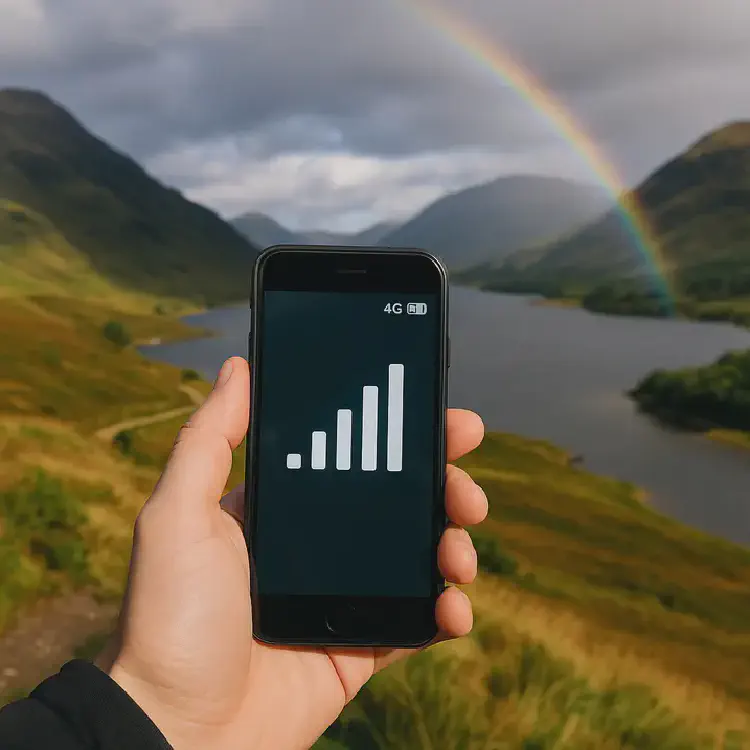Internet and mobile connectivity
Staying connected in Scotland is easy in cities and towns, but more challenging in remote areas. Knowing what to expect helps travelers plan for both convenience and adventure.
- Scotland Tours
- 1 min read
Article 5 of 6 in Practical-Information/

Mobile Networks
- Major providers include EE, Vodafone, O2, and Three, all offering good coverage in urban areas.
- Rural and Highland regions may have weaker signals, especially in glens, islands, and mountainous areas.
- Many visitors opt for prepaid SIM cards or international roaming packages.
Internet Access
- Wi-Fi: Widely available in hotels, cafés, restaurants, libraries, and public transport hubs.
- Free Hotspots: Cities like Edinburgh and Glasgow offer public Wi-Fi in central areas.
- Rural areas may have slower or less reliable connections, so downloading maps in advance is wise.
Connectivity for Travelers
- Navigation: Mobile apps work well in most regions, but offline maps are useful when exploring remote areas.
- Work and Communication: Cities provide high-speed internet, making remote work or video calls easy.
- Emergency Use: Even if mobile signal is weak, most networks support emergency calls.
Practical Tips
- Check if your phone is unlocked before purchasing a UK SIM.
- Consider data packages if planning heavy use for streaming or navigation.
- Expect occasional “digital detox” moments in the Highlands and islands where coverage is sparse.
Why Visitors Should Be Aware
Scotland offers modern connectivity alongside wild, untouched landscapes. Understanding the balance helps travelers enjoy convenience in the cities while embracing the peace of being offline in nature.